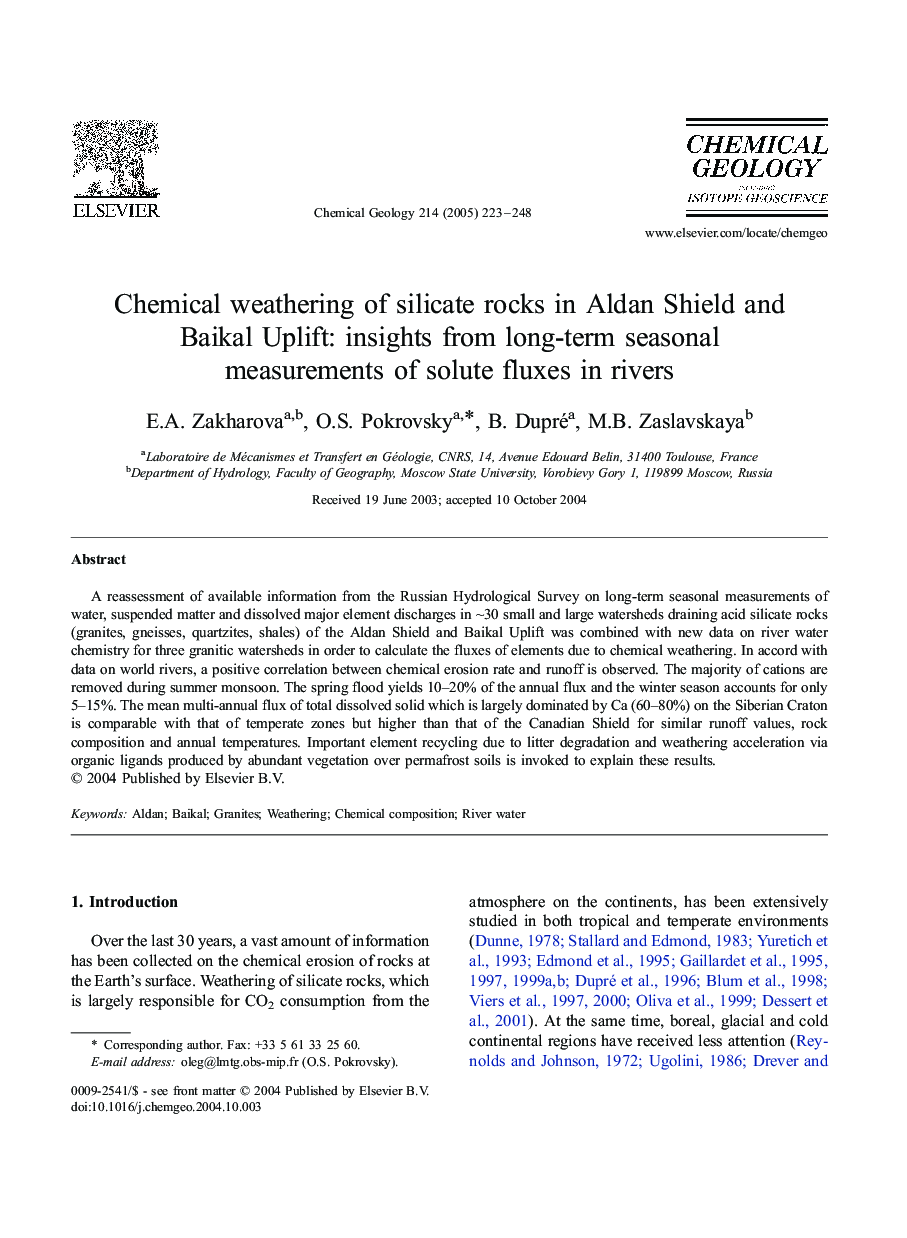| Article ID | Journal | Published Year | Pages | File Type |
|---|---|---|---|---|
| 9529234 | Chemical Geology | 2005 | 26 Pages |
Abstract
A reassessment of available information from the Russian Hydrological Survey on long-term seasonal measurements of water, suspended matter and dissolved major element discharges in â¼30 small and large watersheds draining acid silicate rocks (granites, gneisses, quartzites, shales) of the Aldan Shield and Baikal Uplift was combined with new data on river water chemistry for three granitic watersheds in order to calculate the fluxes of elements due to chemical weathering. In accord with data on world rivers, a positive correlation between chemical erosion rate and runoff is observed. The majority of cations are removed during summer monsoon. The spring flood yields 10-20% of the annual flux and the winter season accounts for only 5-15%. The mean multi-annual flux of total dissolved solid which is largely dominated by Ca (60-80%) on the Siberian Craton is comparable with that of temperate zones but higher than that of the Canadian Shield for similar runoff values, rock composition and annual temperatures. Important element recycling due to litter degradation and weathering acceleration via organic ligands produced by abundant vegetation over permafrost soils is invoked to explain these results.
Related Topics
Physical Sciences and Engineering
Earth and Planetary Sciences
Geochemistry and Petrology
Authors
E.A. Zakharova, O.S. Pokrovsky, B. Dupré, M.B. Zaslavskaya,
